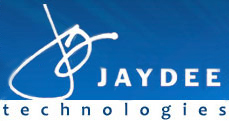Connect my Phone to Work Email
How to Connect My iPhone/Android to my Exchange Server/Work Email
One of the huge advantages of owning a mobile device such as an iPhone or an Android is you can access your email on-the-go. That increases your productivity since you don’t have to wait until you’re at your workstation before you start responding to important emails. Moreover, you can take more work anywhere you go and impress your clients and bosses with your new level of attentiveness.
But, before you can fully enjoy such benefit, you need to verify that your work allows this. On the email server, they can restrict this and even if you put in all the correct information below, it will still not work. Once you know you have access to receive email on an external device, you need to connect the device—whether a tablet or a phone—to your work e-mail, which is usually a Microsoft Exchange Server. For the sake of creating a guide, let’s assume that you’re using an Android device. Here’s how to set it up:
1. Make sure that your phone has a decent amount of battery life left. Though the synchronization isn’t that complicated or requires a lot of time, you don’t want to have anything such as a sudden shutdown interrupting it. This way, you can avoid potential IT headaches. Better yet, do this while your device is plugged in.
2. Grab your Android device and look for the Mail application. It should be found in your Applications folder. Sometimes it’s one of the pre-installed programs that you can see as soon as you load the phone. It may also be referred to as E-mail.
3. Enter the needed login accounts. If you already have an existing login account in the Exchange Server or in your work e-mail, you have to type them in their corresponding boxes. You should be able to provide your username and then your password. On the other hand, if you still don’t have an account, you may be able to create one or ask your IT support to do it for you, especially if account creation in the company is regulated.
4. Choose Exchange account. The application then asks you which server you’re planning to connect to. If you’re work e-mail is on the Exchange Server, then you choose it usually from the drop-down menu. It may not be the exact name of the choice as sometimes it’s called as Exchange ActiveSync, but as long as the name matches that of what your company is using, you’re okay.
5. Enter the needed account information. You may then be prompted to identify more account details such as your domain\username. Enter the required information, including the actual address and name of your Exchange Server. Notice the direction of the slash. If you don’t know your domain name, you will need to ask your IT manager or someone that would be able to give you such information.
6. Wait for system to verify the settings. The application then tries to verify or authenticate the information you’ve provided. It’s trying to compare the data received to that stored in the server. If you have provided the correct information, then the authentication process should not take a long time. Otherwise, it will prompt you of the problem, and you may have to go back to the previous step and check you’re using the exact server name and settings.
7. Choose your preferred account option. You will then have the choice to receive the recent mails, synchronize other programs such as the Calendar and Contacts, etc. Choose the options you want, I suggest that you leave the push setting so that whenever you receive an email, your server will automatically push it to your phone, which is the fastest option. Otherwise you will have to wait 5, 10, or even 15 minutes for the email to show up on your phone.









